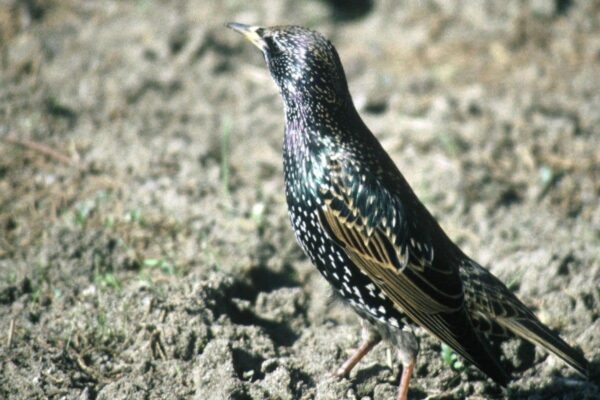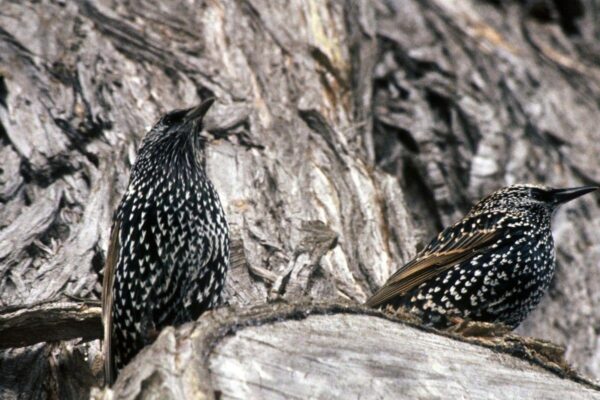European starling
About This Species
European starlings (Common starling) are native to Europe and Asia and were introduced to North America in the late 1800s. They are now found throughout BC, especially around cities and agricultural landscapes. They nest in trees and human-built structures and are very aggressive when looking for nesting sites. Starlings will easily out-compete native birds and can even kill larger birds when competing for nesting sites. European starlings are designated as a Management species by the BC Provincial Priority Invasive Species List.
European starlings reproduce rapidly. A breeding pair can produce two clutches of 4-6 eggs in a year, and fledglings leave the nest 5-6 weeks after eggs are laid. Eggs are typically laid in May.
European starlings are omnivores and compete with native birds for food and space. In agricultural areas, they cause serious damage in vineyards and orchards by feeding on fruit. They feed and travel in small flocks, sometimes reaching groups of 10,000 birds or more.
How to Identify
European starlings are 20 cm long with black glossy plumage with many small light spots. Their feathers have a metallic sheen in the sunlight, and may appear greenish or blueish. Their beaks are bright yellow in the summer and turn black in the winter.

Take Action
Put up birdboxes with ¾ – 1¼ inch holes, too small for starlings but perfect for many native songbirds. If you have a large property, you can encourage birds of prey to visit and hunt by providing a tall perching pole or maintaining tall trees.
-
If you need advice about invasive species on your property or you are concerned about reported invasives in your local area, contact your local government or regional invasive species organization.
REPORT TO PROTECT BC’S BIODIVERSITY

Use the app
Observe and report to protect BC’s biodiversity

Report through this website
Use our form to tell us what you’re seeing and where.
















